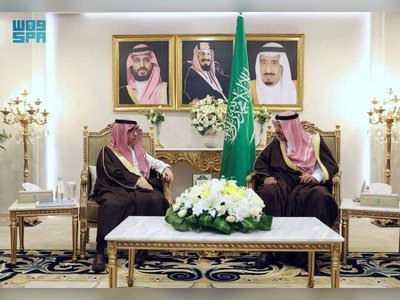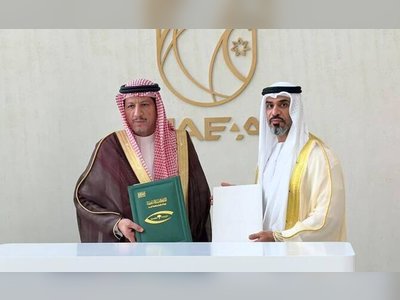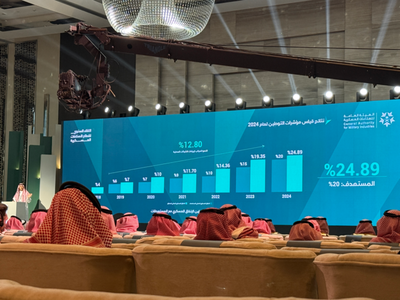
Cable Car Proposal Aims to Improve Safety for Vulnerable Pilgrims During Hajj
Young innovators at the Hajj Conference & Exhibition in Jeddah present cable car and mobile app ideas to enhance the pilgrimage experience.
JEDDAH: The Hajj Conference & Exhibition in Jeddah has seen young innovators and entrepreneurs unveiling novel solutions for enhancing the Hajj and Umrah pilgrimages.
Among these innovations is a proposal for a cable car system aimed at improving safety and convenience, particularly for elderly and special needs pilgrims during the stoning of the devil ritual.
This initiative, presented by Anhar Hamid Al-Luhiani, a student at King Abdulaziz University, has gained support from the Ministry of Hajj and Umrah as part of broader efforts to modernize pilgrimage services.
The traditional rite involves extensive walking, which can pose challenges for vulnerable pilgrims.
Al-Luhiani’s cable car project seeks to reduce travel time and make the journey more comfortable by transporting pilgrims between Muzdalfah and Mina.
The teleferic system is designed to be smart and sustainable, offering a faster alternative than current methods.
Another innovation showcased at the exhibition is an AI app called “Hadi,” developed by Saudi entrepreneur Abdulaziz Al Shawair.
This app provides pilgrims with digital guidance from their arrival in Makkah until departure, including navigation, transportation information, and crowd avoidance tips.
It aims to enhance the overall pilgrimage experience through technology.
Additionally, a mobile phone app for tracking real-time pilgrim numbers at crowded sites has been implemented by the Ministry of Hajj and Umrah in collaboration with Takween, a startup from King Abdullah University of Science and Technology.
The app is intended for capacity management and helps officials estimate crowd sizes, offering insights into the flow of pilgrims.
Other entrepreneurs presented apps and products such as “Pilgrim Pal” by Garibaldy Mukti, which streamlines Hajj and Umrah services for travel agencies, and “My Wudhu Companion,” an ablution bottle designed by Mohammed Akoojee and his wife Sumayya Suliman to facilitate proper wudu performance even in crowded areas.
The conference emphasizes the role of innovation in enhancing pilgrimage services through technology solutions that are being tested and implemented.
These innovations reflect a broader trend towards leveraging technology to manage the logistics and spiritual experiences of pilgrimages, ensuring they remain accessible and safe for all attendees.
Among these innovations is a proposal for a cable car system aimed at improving safety and convenience, particularly for elderly and special needs pilgrims during the stoning of the devil ritual.
This initiative, presented by Anhar Hamid Al-Luhiani, a student at King Abdulaziz University, has gained support from the Ministry of Hajj and Umrah as part of broader efforts to modernize pilgrimage services.
The traditional rite involves extensive walking, which can pose challenges for vulnerable pilgrims.
Al-Luhiani’s cable car project seeks to reduce travel time and make the journey more comfortable by transporting pilgrims between Muzdalfah and Mina.
The teleferic system is designed to be smart and sustainable, offering a faster alternative than current methods.
Another innovation showcased at the exhibition is an AI app called “Hadi,” developed by Saudi entrepreneur Abdulaziz Al Shawair.
This app provides pilgrims with digital guidance from their arrival in Makkah until departure, including navigation, transportation information, and crowd avoidance tips.
It aims to enhance the overall pilgrimage experience through technology.
Additionally, a mobile phone app for tracking real-time pilgrim numbers at crowded sites has been implemented by the Ministry of Hajj and Umrah in collaboration with Takween, a startup from King Abdullah University of Science and Technology.
The app is intended for capacity management and helps officials estimate crowd sizes, offering insights into the flow of pilgrims.
Other entrepreneurs presented apps and products such as “Pilgrim Pal” by Garibaldy Mukti, which streamlines Hajj and Umrah services for travel agencies, and “My Wudhu Companion,” an ablution bottle designed by Mohammed Akoojee and his wife Sumayya Suliman to facilitate proper wudu performance even in crowded areas.
The conference emphasizes the role of innovation in enhancing pilgrimage services through technology solutions that are being tested and implemented.
These innovations reflect a broader trend towards leveraging technology to manage the logistics and spiritual experiences of pilgrimages, ensuring they remain accessible and safe for all attendees.










